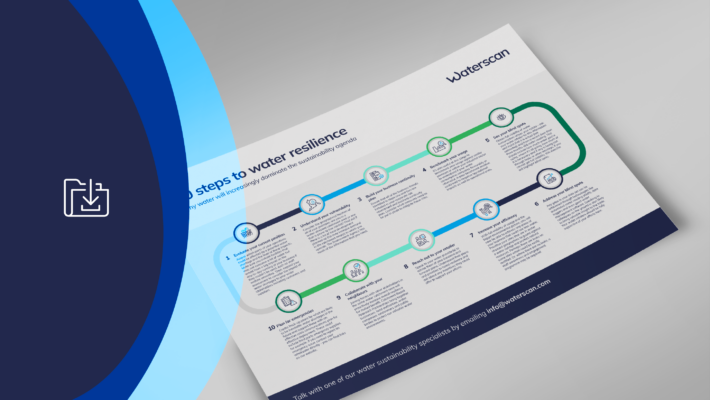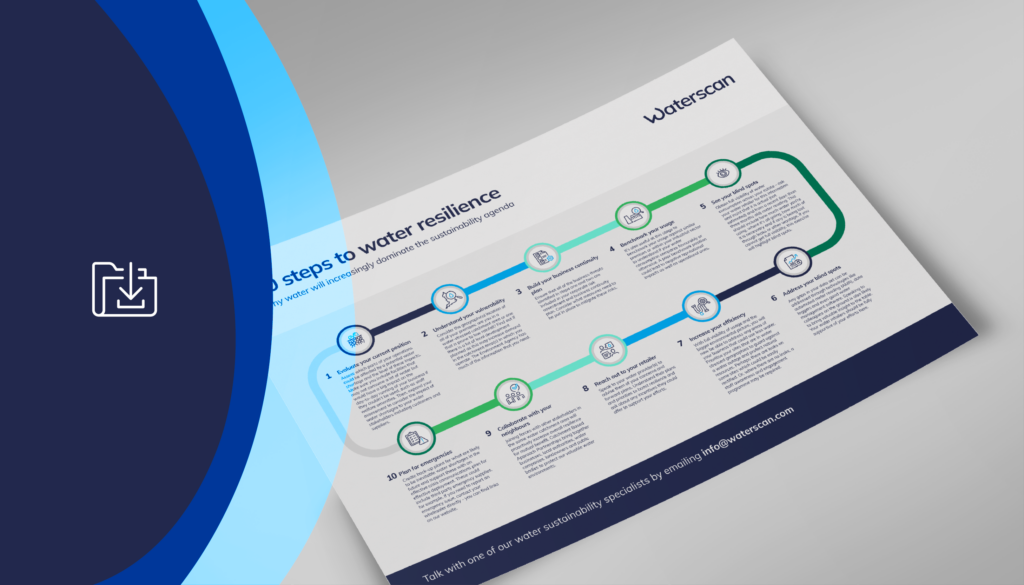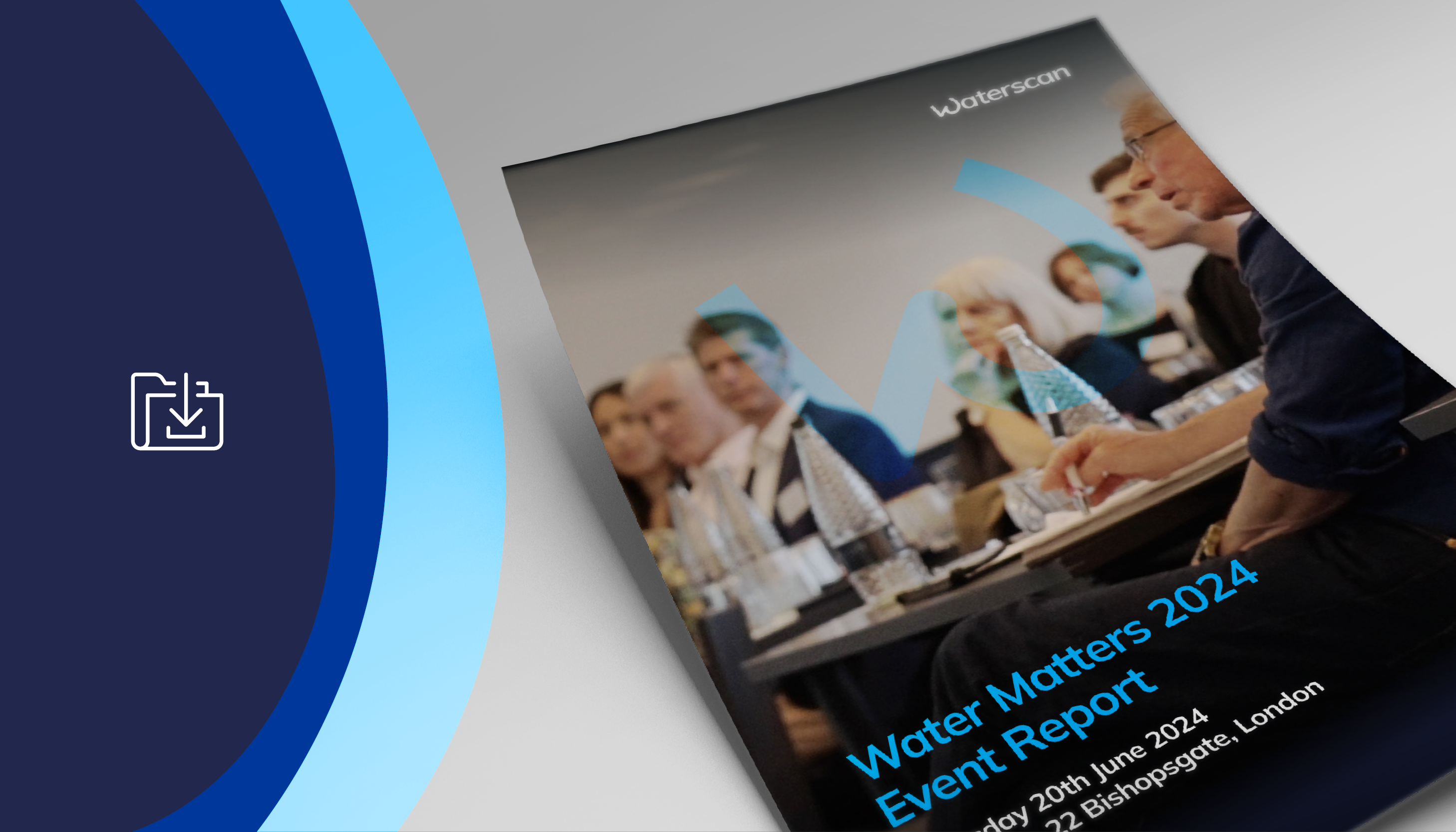Why water will increasingly dominate the sustainability agenda.
1. Evaluate your current position
Assess which parts of your operations could be affected by a potential water shortage and the level of these impacts. Make sure you include facilities that may not consume a lot of water but would have a big impact on the day-to-day running of your business if they couldn’t be used, such as staff welfare amenities. Then, expand your assessment to consider the impact of water shortages to your wider stakeholders including customers and suppliers.
2. Understand your vulnerability
Consider the geographical location of all of your premises: are you in a water-stressed catchment area or one that is prone to low rainfall? Find out if there is a lot of local development planned as this may increase demand in the catchment area(s) in which you operate. The Environment Agency has much of the information that you need.
3. Build your business continuity plan
Ensure that all of the business threats identified in steps one and two are included in your corporate risk assessment and business continuity plan. Consider what measures need to be put in place to mitigate these risks.
4. Benchmark your usage
It’s also useful at this stage to benchmark your usage against similar premises or within your industrial sector to understand if your water consumption compares favourably or otherwise. A poor benchmark position could lead to negative reputational impacts as well as operational ones.
5. See your blind spots
Obtain full visibility of water consumption across your estate – ask your water retailer for this information and insist that it is actual (not estimated) and from a recent (less than three months old) meter reading. This should include how much water you’re using, where it’s all going, how much of it is necessary and if any is being lost through leaks or other wastage. If you cannot get full visibility, this exercise will highlight blind spots.
6. Address your blind spots
Any gaps in your data set can be addressed through technologies like automated meter reading (AMR), data loggers and even good water management software. Speaking to colleagues on the ground is also likely to bring valuable insight to the table. Your water retailers should be fully supportive of your efforts here.
7. Increase your efficiency
With full visibility of usage and the bigger environmental picture, you will now be able to address any areas of your business that could use less water. Prioritise your sites that are in water stressed geographies to guard against a water outage and protect natural resources. Perhaps there are leaks on some sites which could be easily rectified. Or, where there are no leaks, a staff awareness and engagement programme may be required.
8 Reach out to your retailer
Speak to your water provider(s) to advise them of your concerns and forward plans. Understand their plans and priorities to boost resilience and ask about any incentives they could offer to support your efforts.
9. Collaborate with your neighbours
Joining forces with other stakeholders in the same water catchment area will proactively increase overall resilience for mutual benefit. Catchment Based Approach Partnerships bring together businesses, local authorities, water companies, landowners and public bodies to protect our valuable water environments.
10. Plan for emergencies
Create back-up plans for what are likely to be inevitable water shortages in the future and support these with an effective crisis communications plan for effective deployment. These could include third party emergency supplies, for example. If you need to report an emergency issue, contact your wholesaler directly – you can find links on our website.
You can download our infographic below.





